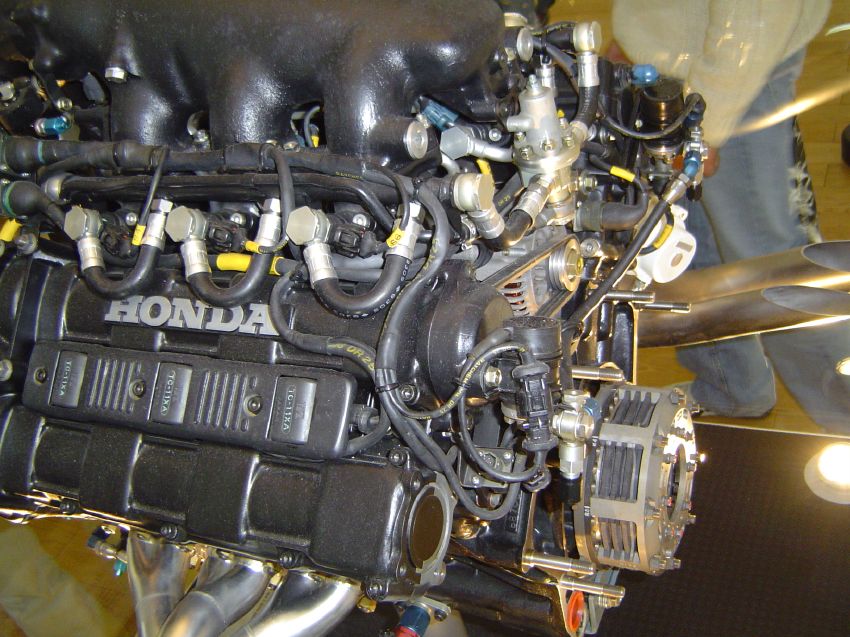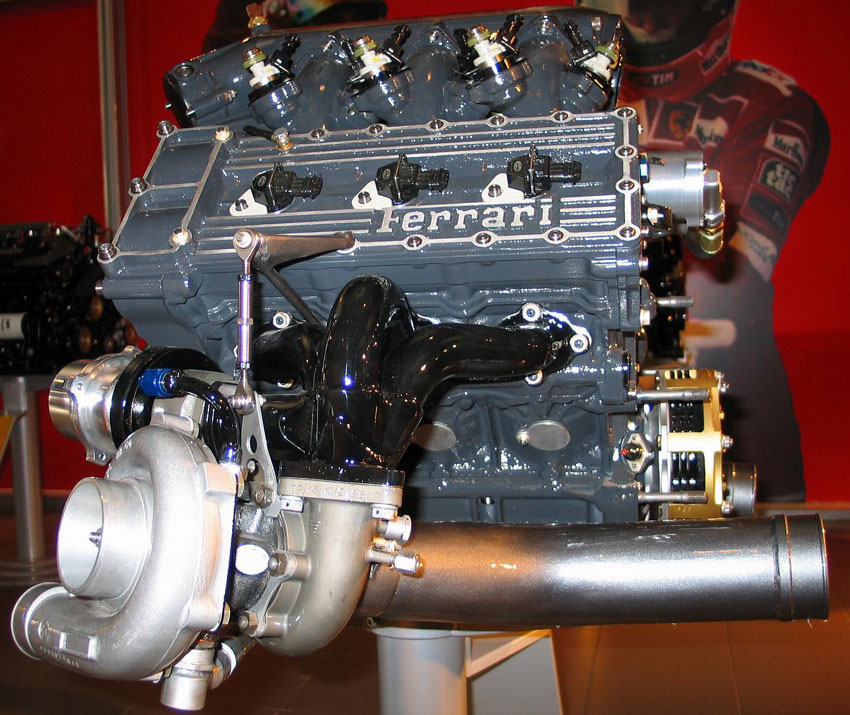This is the opinion of the FiA. The full text can be read as a PDF if you click on the link.
Gilles Simon, FiA wrote:Ideally, we would like to understand where road cars will be in five to ten years. We would then create regulations for three years from now to anticipate this. This is the most difficult route because
we don’t want to impose our own views. We need to have a proper view of where the manufacturers will be. I think that could actually add to the show because with reduced displacement engines and lower torque, you could
use additional electrical torque to differentiate between the cars, while at the same time developing and showcasing hybrid technology and performance that will be used in passenger cars.
There have to be technical regulations to avoid useless costs and I think all the manufacturers understand this. One way to do this is by using
longer-lasting components. It is
possible to have some common items as well but it is very important that there is
clear differentiation between the cars from each manufacturer.
We have to try to
push forward with fuel efficiency. If, as an engine engineer, I am given a
maximum fuel load, I will try to give the driver the maximum horsepower possible, building the most efficient engine I can. It is a technical competition, and as efficiency is obviously good for road cars, that could be good for them as well. So we want to try to adapt the rules we have in the run-up to the new engine formula.”
And here we have Ferrari. The autocar article is linked.
Amedeo Felisa, Ferrari wrote:F1 has to set up something that's helpful for the real world. The best solution is for an engine that is turbocharged and GDI. That is what we would support. It is the best solution for driving efficiency and utilisation of the engine in a positive way.
And Mercedes with the autoevolution source linked as well.
Norbert Haug, Mercedes wrote:We need to be mindful that we are building the cleanest cars we can. The engine will be downsized in 2013 because the fuel consumption has to go down, and we need to cut carbon emissions. But we must not think that a 700bhp engine is going to be the greenest car ever, because that's not great.
The most esteemed moderator voicing his opinion
mx_tifosi wrote:Since most super and high performance cars use V8's (or larger) why not stick to the current 2.4? The current formula is way more relevant than any four banger version, especially at least for the following decade. Add KERS if you wish, but keep the V8.
We actually see that both Ferrari and Mercedes principally agree with the objective of making the next formula a downsized turbo. For me that means there is no point in keeping the old formula and miss out on the efficiency. Although it is not in the sound bite that I repeated here, both companies principally agreed with 1.6 L of displacement. There is no understanding of a cylinder configuration atm.
Historically Ferrari, Renault and the TAG "made by Porsche" 1.5L engines were all custom made V6. Only BMW used an existing I-4 block which had successfully been used in road cars and saloon racing cars. This was probably the reason why it used a subframe as it had not been designed to be used as a fully stressed member of the chassis. There isn't a fundamental obstacle to design I-4 engines fully stressed if the requirement is set in the spec.
As far as I'm aware the engine configuration plays a small part in making a 1.5L F1 turbo engine successful. The coming generation will basically compete on fuel efficiency as all the players agree in the above statements. It is also very likely that the engine will have a minimum weight limit and a CoG spec like the V8 to make them more cost efficient and long lived. We have to expect that the new engines will also face the multi race sporting requirements that were introduced for V8s for cost reasons. Gilles Simon essentially hints to that when he talks of useless costs. Specifying a common configuration could be driven by three motives. First there would probably be one configuration which leads to the highest efficiency (suspect I-4), second it would be good for customers who would change the supplier (as Brawn from Honda to Merc) and third all deviating concepts would later converge to the most efficient concept anyway.
mx_tifosi wrote:Image, history, technology, road car relevancy in respect to the manufacturers involved? McLaren, Mercedes, Ferrari, BMW, Toyota, and Nissan/Renault have high performance engines that are at least six cylinders in size. Why should they kneel down to the level of I4's just for the sake of high volume manufacturers which offer this type of engine when they don't even participate? Why not specifically cater or aim for the high performance market that doesn't use anything smaller than six cylinders.
Historic or marketing reasons might compel an engine supplier to prefer a deviating configuration as mx_tifosi seems to think. I am inclined to think that this will not be the case as engine manufacturers tend to make rational decisions when it comes to such important projects. When the 3.0 Liter engines were free in configuration everybody including Ferrari eventually used similar V10 engines although Ferrari traditionally was associated with V12. My view is that the same thing will happen with I-4, V4, Flat4 and V6 in the new formula. Traditionally high performance markets have gone with higher cylinder counts due to higher top power and smother delivery. Volume manufacturers usually selected lower cylinsder counts for cost efficiency. The criteria will not be valid with the new formula I think. Lower cylinder counts offer less friction and better fuel efficiency. I expect this to be the dominant criterion in the choice of cylinder configuration. It will apply to premium, performance and volume manufacturers alike. If you look to Le Mans you see that it also applies to performance prototypes like the Audi R15 which runs less cylinders than it's predecessor for exactly the same reason.
There would be a simple way to accommodate other configurations though. One would specify a bolt on pattern which would be possible for V6 and I-4. this would be mandatory and would ensure that customers can exchange engines between different suppliers. With the new formula it should be possible to supply a GRE configuration. I actually think that the competition would naturally converge on the GRE spec. We would have to see if that is the common view. The FiA have said that they will listen to the manufacturers and not impose their view. When I read Gilles Simon I do get the impression that he wants the basic ICE to be a common design, which the GRE would qualify for. In his concept the brand differentiation comes primarily from the electric secondary torque of the KERS system.
The biggest difference between the first and the second F1 turbo formula would be the inherent competitive advantage. The first generation would compete primarily on power/weight ratio at a given load pressure. There were also some gentle fuel load restrictions compared to what we have to expect for the second generation.
The new generation turbos would radically compete on fuel loads that would be like 30-40% of the consumption under full power. The engines obviously would be able to go to full power but not for something like 60% of the race as current engines do. Current engines would consume perhaps 250 L of fuel for a GP distance on full power. The actual consumption is more like 180 L due to the engine not being on full throttle all the time. I expect the new turbo fuel allowance somewhere between 80 and 100L initially.
There would be three working fields for lower fuel consumption. First the new engines would have significantly higher fuel efficiency due to direct injection or even HCCI, due to no throttling losses and the use of the turbo energy from the exhaust. Second all forms of regeneration would be legal including AWKERS and HERS. Thirdly the fuel allocation would comprise an element that is contributed by reduced drag and downforce. With todays aero rules too much drag and downforce is possible. I expect a significant cut to perhaps 50% of the 2010 level of drag and downforce already with the new 2011 rules coming into effect. The 2013 rules should follow the same philosophy.





